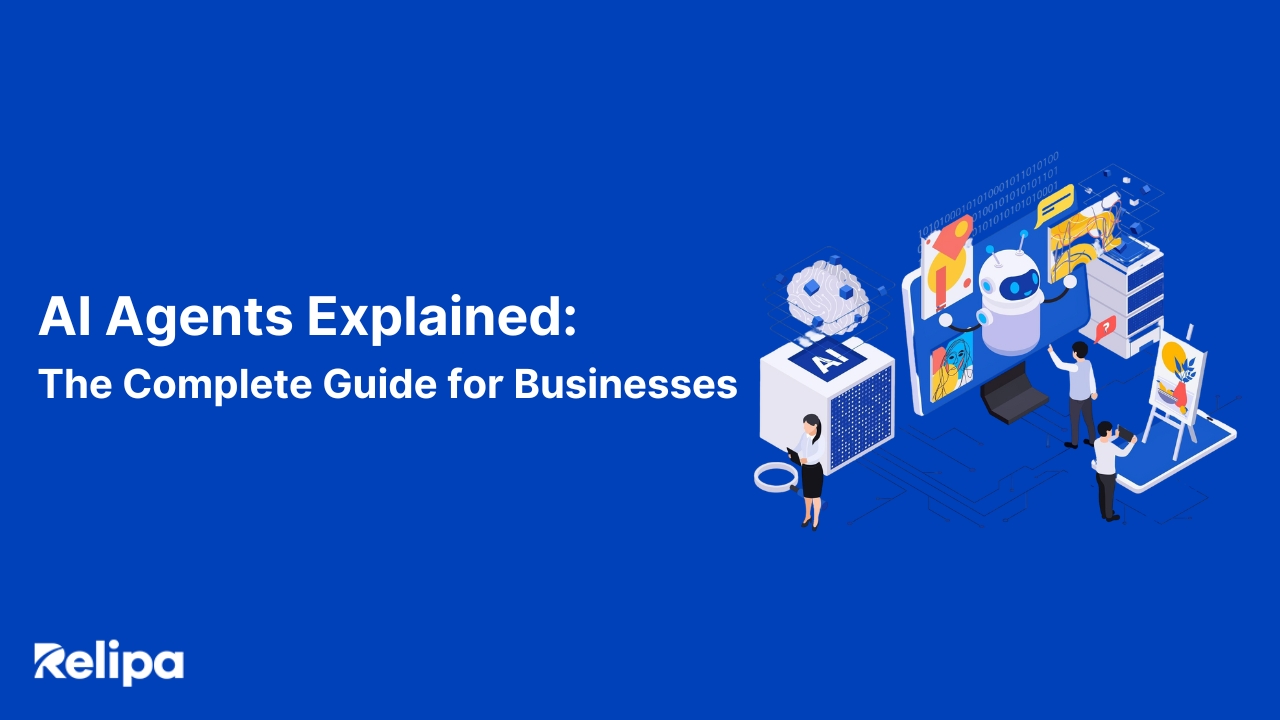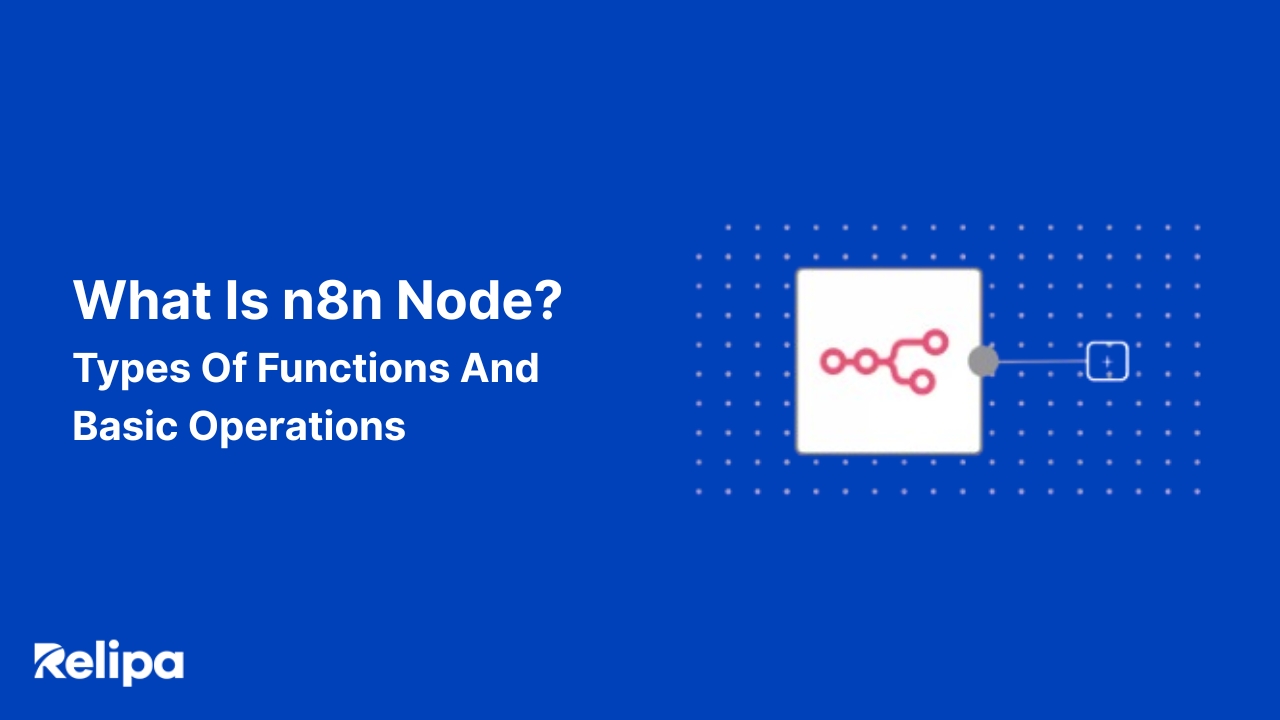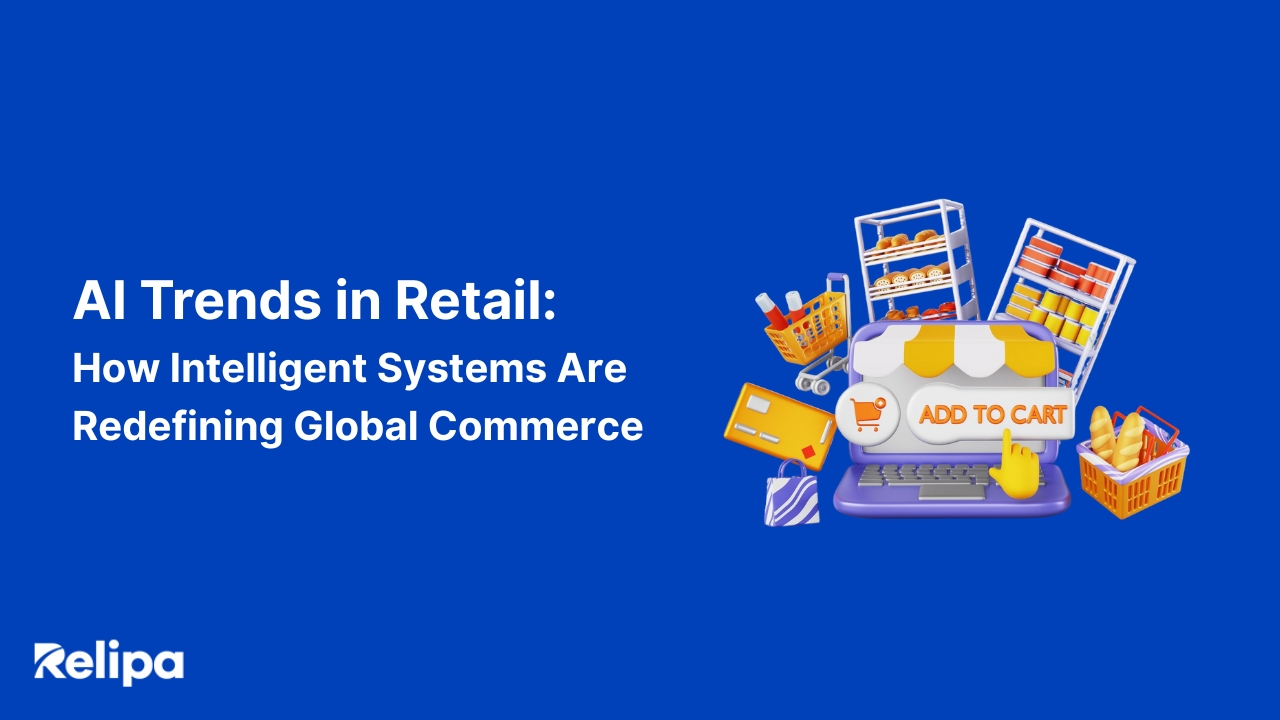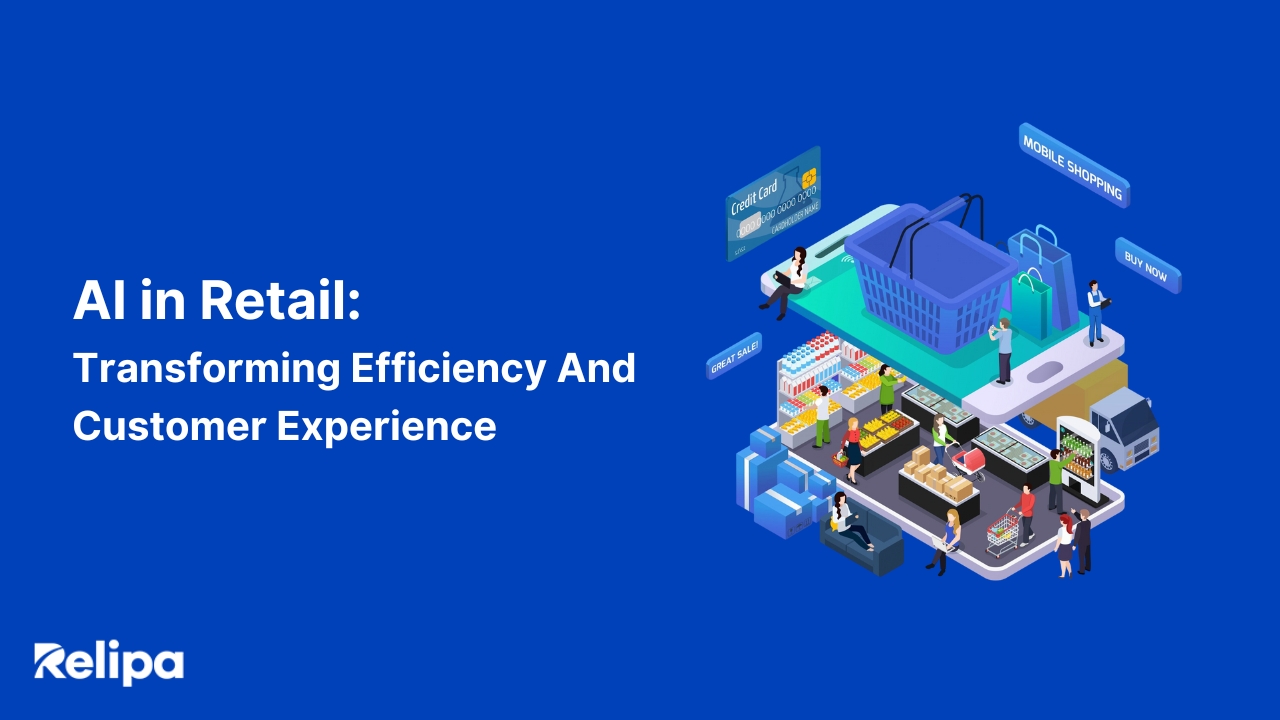AI Agents Explained: The Complete Guide For Businesses
A few years ago, AI amazed us with its ability to write poems, answer questions, and generate lifelike images. It felt like having a brilliant assistant at our fingertips, one that could understand and respond instantly. But that was just the beginning.
Today, a new generation of AI is emerging, one that doesn’t just respond to our commands but takes initiative. These systems, called AI Agents, can set goals, make plans, and carry out actions in the digital world, often faster and more effectively than a human could.
In this blog, you’ll learn what AI agents are, how they work, where they’re already being used, and the challenges companies must prepare for as we enter the new agentic era of artificial intelligence.
What is an AI Agent?
According to IBM, an AI agent is “a system that autonomously performs tasks by designing workflows and leveraging available tools”. Google Cloud adds that these systems “use AI to pursue goals and complete tasks on behalf of users, with reasoning, planning, and memory”. And AWS highlights the key element that makes them different from traditional automation: autonomy, the ability to sense an environment, make decisions, make decisions, and take action toward a goal without needing step-by-step instructions.
If large language models like ChatGPT taught machines how to talk, AI agents are teaching them how to act. In simpler terms, you can think of an AI agent as a digital teammate. It doesn’t just wait for you to tell it what to do, it understands your objectives, figures out the best path, executes the necessary steps, and learn from the results.
And just like a skilled employee, a well-designed AI agent behaves less like a static tool and more like a growing professional. Each time it completes a task, it learns a little more, sharpening its strategy, adapting to feedback, and performing better with every iteration.
How AI Agents Work?
AI models have given machines the ability to think, AI agents give them the ability to do. Behind the scenes, it follows a loop that’ surprisingly human: Goal -> Plan -> Act-> Learn. It sets an objective, figures out the best way forward, executes the task, and then refines its strategy for the next round.
Let’s break down how this process works step by step:
- Goal Definition: Everything begins with a goal. The agent receives a specific objective, such as “book a meeting”, “plan a campaign”, “summarize the information”, then breaks that high-level request into smaller, structured tasks it can reason about and act on.
- Perception and Reasoning: Once the goal is clear, the agent gathers information from its environment, user inputs, APIs, databases, or external tools. Using its AI reasoning engine (like GPT-4, Claude, or Gemini), it analyzes the data, weighs possible approaches, and builds a plan of action.
- Action Execution: Next, the agent puts its plan into motion. It may send an email, query a database, update a CRM, generate code, or coordinate tasks across systems. Unlike simple bots that follow fixed scripts, AI agents can adapt mid-process, adjusting their actions if conditions change or new data appears.
- Learning and Memory: After finishing the task, the agent reviews the outcome. It tracks what worked well, what failed, and what could be improved next time. This knowledge is stored in its memory, allowing the agent to continuously refine its reasoning and become more effective with every run.
Under the Hood
Most AI agents are built around four key modules:
- Reasoning engine: The brain that understands, plans, and decides.
- Memory layer: Stores past context, feedback, and outcomes.
- Toolset: Connects the agent to real-world APIs and systems.
- Orchestrator: Coordinates multiple goals or even multiple agents.
Key Characteristics of AI Agents
AI agents stand out because they behave less like machines and more like decision-makers. Instead of waiting for instructions, they observe, reason, and act, adjusting to whatever the situation demands.
Here are some of the features that make them so transformative:
Autonomy
An AI agent can operate independently once a goal is defined. It doesn’t need constant supervision or manual prompts, instead, it can make decisions, prioritize tasks, and execute actions on its own. This autonomy allows businesses to scale operations efficiently while reducing repetitive human effort.
Context Awareness
AI agents don’t act blindly. They continuously perceive their environment, reading data, recognizing patterns, and understanding context before taking action. Whether they’re managing supply chains or optimizing ad performance, this awareness allows them to make choices that stay relevant and effective as conditions change.
Continuous Learning
An agent’s intelligence doesn’t remain static. Each interaction, success, or failure becomes fuel for improvement. Over time, it builds memory, learns patterns, and fine-tunes its strategies, gradually becoming more capable and efficient. That’s how an AI agent evolves from a task executor into a self-improving system that grows alongside your business.
Collaboration and Integration
AI agents rarely work alone. They’re built to connect, linking seamlessly with tools like CRMs, databases, APIs, and communication systems to take meaningful action. Even more powerful is their ability to collaborate with other agents or human teams, coordinating tasks and exchanging data to achieve shared objectives faster and more accurately.
Goal-Oriented Reasoning
Every A agent operates with a clear sense of purpose. Rather than executing isolated commands, it reasons about goals, formulates plans, and takes actions that move toward measurable outcomes. This goal-driven design makes agents especially valuable in strategic areas like marketing optimization, customer retention, and operations management.
Adaptability
Change is constant and AI agents are built for it. When conditions shift, data disappear, or priorities evolve, they can re-evaluate and adjust their plans without external input. This flexibility allows them to stay reliable in uncertain environments and maintain performance where static systems would fail. In essence, adaptability is what makes agents resilient in the real world.
Types of AI Agents
Not all AI agents are built the same way. Depending on their purpose, level of autonomy, and complexity, agents can take many forms, from simple rule-based bots to advanced multi-agent systems that collaborate on complex goals.
Let’s explore the main types you’ll encounter in today’s AI ecosystem.
Reactive Agents: Fast but Simple
Reactive agents are the most basic type. They don’t have memory or long-term planning abilities, instead, they respond directly to the environment based on predefined rules. Think of them as “if-this-then-that” systems, quick to react but limited in scope.
Imagine a system that monitors website uptime and sends an alert whenever a server fails. It doesn’t need to “think,” it just reacts, fast and efficiently. That simplicity makes reactive agents perfect for real-time monitoring or automated responses, though it also limits their flexibility.
Model-Based Agents: Building Awareness
Model-based agents go one step further by keeping track of what’s happening around them. They maintain an internal model, a digital understanding of their environment, which helps them predict what might happen next.
Instead of reacting blindly, they use this awareness to make more informed decisions. Think of a logistics agent that knows inventory levels, supplier timelines, and shipping routes. When a delay occurs, it can adjust delivery plans automatically rather than waiting for human input.
Goal-based Agents: Acting with Purpose
Goal-based agents are where true “decision-making” begins. These agents don’t just respond, they think ahead. They evaluate multiple paths, predict outcomes, and choose the one that brings them closer to their goal.
For example, a digital marketing agent might analyze ad performance, test new creatives, and reallocate budget to achieve a higher return on investment. It’s not just doing what it’s told, it’s strategizing to hit a target.
Utility-based Agents: Choosing What’s Best
Utility-based agents take goal-based reasoning a step further by adding a sense of preference. Instead of focusing on any goal, they calculate which outcome delivers the greatest value. This is especially useful in complex situations where trade-offs are involved.
An energy management agent, for instance, might balance electricity cost, environmental impact, and resource availability, constantly adjusting to maximize overall efficiency.
Multi-Agent Systems: Intelligence in Collaboration
Sometimes, one agent isn’t enough. Complex tasks like supply chain management, traffic coordination, or financial forecasting require multiple agents working together. In these systems, agents communicate, negotiate, and divide responsibilities, just like a well-coordinated human team.
Picture a fleet of delivery drones sharing data to avoid overlap and ensure every package arrives on time. Each drone acts independently, but together they form a synchronized, intelligent network.
Learning Agents: Improving Over Time
Learning agents are where AI truly starts to feel alive. They learn from their experiences, from every success, failure, or user interaction, and use that knowledge to make better decisions in the future.
Rather than being manually reprogrammed, they evolve naturally through feedback and data. A customer service AI that refines its tone and response patterns after each conversation is a simple example. Over time, it becomes smarter, faster, and more accurate, learning much like a human employee would.
Read more: 5 Types of AI Agents Explained: Features, Functions, and Use Cases
Where AI Agents Are Making The Biggest Impact
Marketing: Smarter, Faster, Always-On
In marketing, AI agents are becoming the new growth engine. They can run campaigns, analyze engagement metrics, and automatically reallocate budgets based on what’s working, all without waiting for manual updates. Instead of following static playbooks, they continuously test hypotheses, adapt messaging, and fine-tune channels to meet evolving consumer behavior.
Instead of marketers juggling dashboards and spreadsheets, an AI agent can do the heavy lifting. Teams no longer have to spend hours reviewing analytics or adjusting ads manually, the AI agent handles optimization in real time. Marketers can focus on storytelling, branding, and long-term strategy while the AI agent ensures that every campaign delivers measurable growth.
Customer Experience: From Chatbots to Intelligent Service Agents
Customer support has traditionally been reactive, answering queries one by one within tight limits. AI agents are reshaping this by understanding intent, accessing relevant systems, and executing full processes. They can handle returns, schedule appointments, and even anticipate customer needs before a request is made. The experience feels smoother and more personal because the AI agent understands context rather than relying on the scripted replies.
Beyond resolving issues, these agents collect valuable insight from every interaction. They learn customer preferences, detect recurring problems, and suggest process improvements to human teams. Over time, they evolve into proactive service partners that not only respond to customers but help shape better experiences across the entire journey.
Operations and Logistics: Turning Data into Real-time Decisions
Operations and logistics depend on precision and timing, areas where AI agents excel. These systems can track inventory levels, monitor shipment routes, and adjust production schedules dynamically. When a delivery delay or equipment failure occurs, the AI agent reacts immediately, reassigning resources or rerouting shipments to minimize disruption.
The power of AI in operations lies in its ability to transform massive data streams into actionable intelligence. Instead of waiting for end-of-day reports, businesses can now make adjustments as events unfold. This real-time responsiveness keeps supply chains lean, agile, and resilient, a necessity in an increasingly unpredictable global environment.
Software Development: Empowering the Modern Dev Team
For developers, AI agents are becoming essential copilots. They can write test cases, review pull requests, and deploy code into production environments. By automating the repetitive parts of the development, AI agents free engineers to focus on architecture, performance tuning, and product design.
In DevOps, AI agents serve as tireless monitors, ensuring uptime, rolling back faulty builds, and alerting teams before issues escalate. As a result, software delivery becomes faster, safer, and more consistent. The outcome is a development workflow that feels less mechanical and more fluid, where human creativity and machine efficiency complement each other seamlessly.
Healthcare: Making Data Work for Doctors
In healthcare, AI agents are quietly improving how professionals handle information. They can organize patient histories, summarize clinical notes, and surface critical details that might otherwise be overlooked. This allows doctors and nurses to make better-informed decisions without spending hours navigating complex databases.
Apart from administration, AI agents also play an active role in diagnostics and care coordination. By cross-referencing symptoms, medical images, and historical data, they can suggest possible conditions or flag inconsistencies in patient records. The result is faster, more accurate, and more consistent care, enabling medical teams to focus on patients, not paperwork.
Finance: Smarter Oversight and Risk Management
In finance, AI agents analyze thousands of transactions per second, identifying irregular patterns that could signal fraud or compliance issues. They act in real-time, flagging anomalies, freezing accounts, or alerting analysts when necessary. This level of vigilance helps institutions prevent losses before they happen.
Aside from that, financial agents can forecast market movements, manage portfolios, and optimize trading strategies with minimal human oversight. Instead of replacing analysts, they act as high-speed assistants that process the noise of data, letting humans focus on interpretation and strategy.
What Businesses Should Consider Before Adopting AI Agents
Integrating AI agents isn’t just about plugging in new technology, it requires aligning strategy, data, and people. Here are key factors every organization should evaluate before implementation:
- Set clear goals: Start with a well-defined purpose for your AI agent. Identify the exact problems you want to solve, whether it’s automating customer support, optimizing campaigns, or managing workflows, and set measurable KPIs to track impact over time.
- Build a strong data foundation: AI agents thrive on context, and context comes from data. Ensure your organization has accurate, unified, and easily accessible data sources so the AI agent can make reliable, informed decisions.
- Balance autonomy and oversight: Begin with a controlled setup where humans approve or monitor agent decisions. As performance improves and trust builds, gradually increase the level of autonomy to achieve efficiency without losing accountability.
- Prioritize security and compliance: Since AI agents often interact with sensitive information, implement strict access controls, encryption, and audit trails. Always design with data privacy and regulatory compliance (like GDPR or HIPAA) in mind.
- Keep humans in the loop: Even the smartest AI agents benefit from human judgment. Train teams to understand how the AI agent works, when to intervene, and how to interpret its output.
- Monitor, measure, and improve: Treat deployment as an ongoing process. Continuously track the agent’s accuracy, reliability, and efficiency, gather feedback, and retrain it to adapt to new goals or data patterns.
- Foster a culture of experimentation: Encourage teams to run small pilots, test new workflows, and share results. A mindset of experimentation can accelerate innovation and help your organization discover the best ways AI agents can create value.
Conclusion
Change rarely feels like change when you’re inside it. We once delegated strength to machines, memory to computers, and now, decision-making to AI agents. The pattern is the same, we offload the predictable so we can focus on the profound.
In a few years, “using AI” will sound as dated as “using the internet”. What matters now is not if they’ll change business, but how ready we are to evolve around them. So if you’re curious, start small. Let one agent handle a single process, learn from it, and grow from there.
At Relipa, our engineering team brings over nine years of hands-on experience across Blockchain, and AI. Contact us now because we’re ready to help you build secure, high-performance, and future-ready systems tailored to your business goals.





